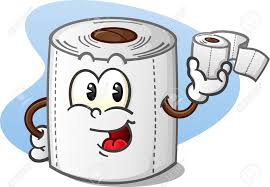When you penalize your friends, they ought to be able to retaliate, and they often do. Consider Canada, Australia and Mexico. Our President slapped tariffs on the import of some of their metals and they fought back with similar tariffs.
They should have just quit buying toilet paper from us. Don’t snicker. Combined, the three countries import toilet paper worth more than $45 million annually.
That may seem like a lot, but consider this: People use about 100 rolls of toilet paper per person every year. It takes more than 380 trees to make enough paper to last a person a lifetime.
Scientists say that two mature trees can produce enough oxygen for a family of four, so if you were to quit using toilet paper, you would make it possible for 47.5 people to breathe for 365 days.
Just think how much useful information you would miss if you didn’t read this column. For example, the second and third most popular colors for toilet paper in the United Kingdom are pink and peach.
Naturally, the French aren’t satisfied with simply adding color. They make designer rolls.
They call their paper Petit Lutin. It has little images and writings on French culture, current affairs and geography printed on every perforated sheet. So the French don’t have to take a magazine into the bathroom—they can read their toilet paper.
I know you’re dying to know who invented toilet paper, so here it is: it dates back to China in the 6th century AD. It was popular in the Ming Dynasty and in 1393, 720,000 sheets were produced for the imperial court. These perfumed sheets were two by three feet in size. The French could have printed Le Monde on them and still have room for a calendar.
I’m sure you’re wondering what people used before toilet paper. Well, the Romans used sponges and salt water, but nearly everyone else improvised with the material available, including grass, leaves, clay and rocks. I imagine that using a rock would make you hope that someone would hurry up and invent toilet paper.
Even after it was invented, it wasn’t perfect. In fact, it wasn’t until 1935 that a company was able to guarantee “splinter-free” toilet paper. Before that, people used the paper very carefully.
When I was in high school a favorite pastime was “papering” someone’s house or even better, the school building itself. This consisted of tossing rolls of toilet paper over trees and porch swings etc. Lots of work for someone the next day taking it all down.
Who knows how much breathing that took away from someone?
To close this fascinating dissertation I have to tell you that the proper way to hang a roll of toilet paper in its holder is from the inside near the wall. Don’t let anyone tell you any other way is better.
Contact Ted Blankenship at tblankenship@cox.net









